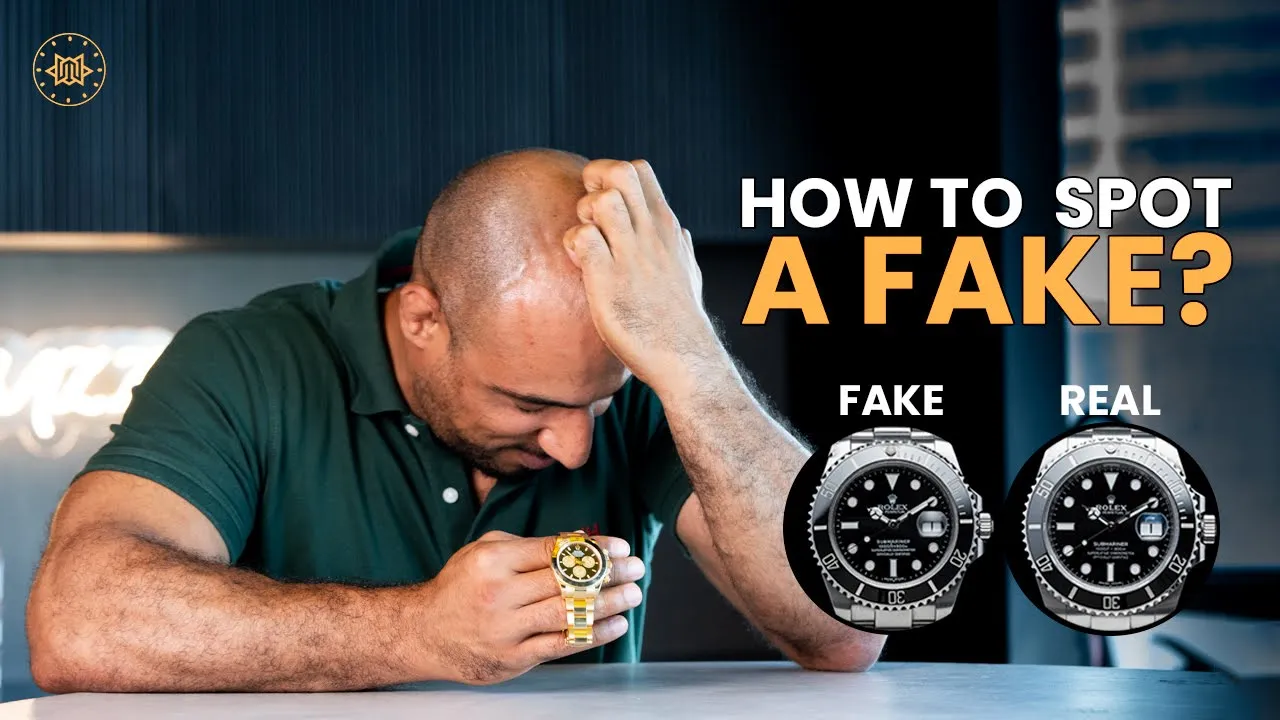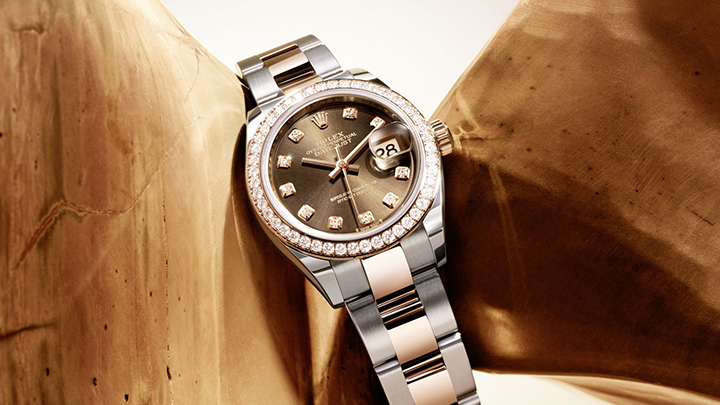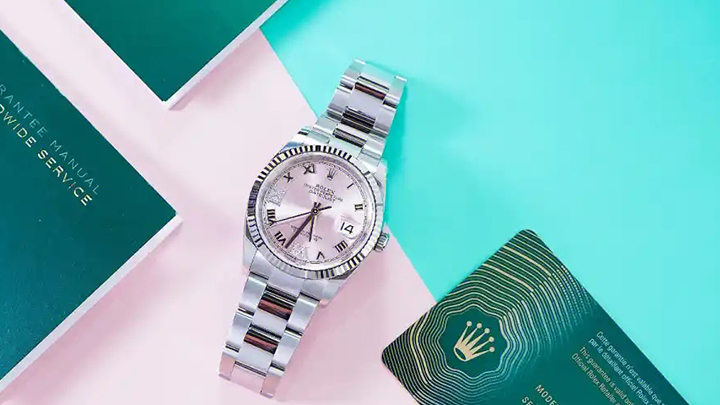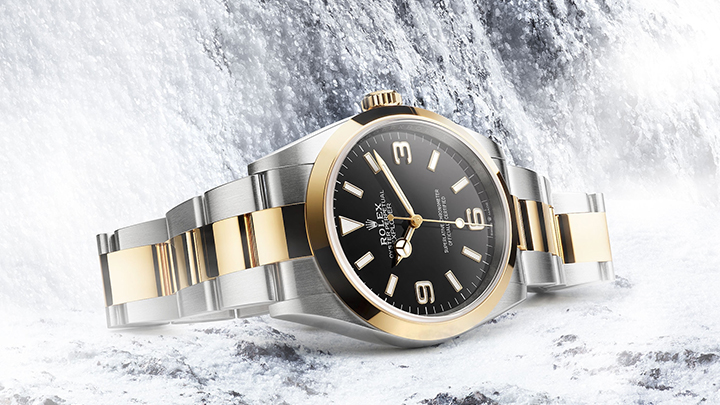How to spot a fake watch
The world of luxury watches can be fascinating, with many enthusiasts dedicating themselves to learning about the craftsmanship and history behind renowned timepieces. Unfortunately, with the rising demand for high-end watches, counterfeit models have also become more common. Whether you're an experienced collector or someone simply looking to purchase a quality watch, knowing how to identify a fake is essential to making an informed decision. Here are some tips on how to spot a fake watch and avoid falling victim to counterfeit products.
1. Examine the Weight
Luxury watches, particularly those made with high-quality metals like stainless steel, gold, or titanium, tend to be heavy. A counterfeit watch may feel light in comparison, as manufacturers of fake watches often use cheaper materials to cut costs. If the watch feels unusually light for its size, it could be a red flag.
2. Inspect the Dial
One of the most telling signs of a fake watch is the dial. In authentic watches, the dial is often meticulously crafted, with smooth surfaces and precise markings. Counterfeit watches may have poorly aligned hour markers, crooked logos, or uneven paint. Pay close attention to the details, as even minor imperfections can point to a fake.
3. Check the Movement
A high-end watch typically has a smooth movement of the second hand, which glides fluidly around the dial. In many counterfeits, the second hand ticks in small jumps rather than moving smoothly. If the second hand on the watch doesn't exhibit a continuous sweeping motion, it could indicate that you're dealing with a fake.
4. Look for a Serial Number
Authentic watches, especially those from prestigious brands, often have a unique serial number engraved on the case. This number is usually located between the lugs or on the back of the case. A genuine serial number can be cross-referenced with the brand's records to confirm its authenticity. If the watch you're examining lacks this number or the engraving looks poorly done, it's likely a counterfeit.
5. Check the Logo
Luxury watchmakers have perfected the art of logo engraving, and the logos on genuine watches are typically crisp, clear, and refined. A counterfeit watch may feature a logo that is poorly executed, such as one that is misspelled, has incorrect font, or appears blurred. If you notice any inconsistencies with the logo, it’s worth being cautious.
6. Evaluate the Materials
The quality of the materials used in a luxury watch is one of the most significant indicators of authenticity. High-end brands use premium materials like scratch-resistant sapphire crystal, high-grade stainless steel, and fine leather or metal bands. A fake watch, on the other hand, might feature plastic or low-grade materials that are easy to spot upon closer inspection. Check the glass, bezel, and strap to ensure they match the standards of the brand.
7. Analyze the Price
If the price of the watch seems too good to be true, it probably is. Luxury watches come with a significant price tag due to the meticulous craftsmanship and materials that go into making them. A brand-new Rolex, Patek Philippe, or Audemars Piguet watch sold for a fraction of its retail price is likely a fake. Always be wary of "bargain" offers that seem too good to be legitimate.
8. Check the Back of the Watch
The back of a genuine luxury watch is often just as intricately designed as the front. Many authentic models feature detailed engravings, such as the brand’s logo, the model number, and sometimes even a unique pattern or design. Fake watches may have poorly engraved backs, or they might be entirely blank. Pay attention to the craftsmanship and ensure that it aligns with the standards of the brand you're considering.
9. Test the Functionality
Luxury watches often feature complex mechanical movements that require high precision. Depending on the model, a luxury watch might include complications like chronographs, calendars, or moon phase indicators. A fake watch may not function as smoothly or precisely as the real thing, or it may lack these features altogether. Be sure to test all functions, such as the chronograph, date settings, or rotating bezels, and make sure they work flawlessly.
10. Buy from Trusted Sources
One of the best ways to avoid purchasing a fake watch is to buy from a reputable dealer or authorized retailer. Trusted websites like wristwatch.us.com specialize in authentic timepieces and provide certificates of authenticity, ensuring that the watch you're buying is genuine. Purchasing from verified sellers reduces the risk of encountering counterfeit products and guarantees that you're investing in a real luxury timepiece.
11. Use Online Tools
Many luxury watch brands have tools available on their official websites that allow you to verify the authenticity of a watch. You can often input a serial number or use other identification methods to check whether the watch you’re considering is real. This can be a valuable resource when you're unsure about a potential purchase.
By keeping these tips in mind, you can confidently distinguish between a fake and a genuine luxury watch, ensuring that you make an informed decision when adding a new timepiece to your collection. Always prioritize quality and authenticity, and remember that a well-crafted watch is not just a timekeeping device, but also a symbol of fine craftsmanship.




